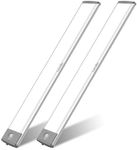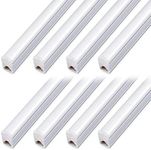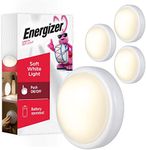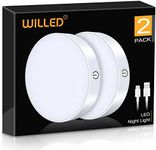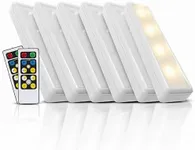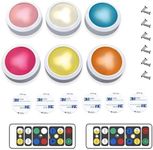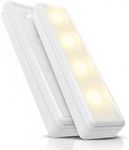Buying Guide for the Best closet lights
Choosing the right closet lights can make a big difference in how easily you find things and how pleasant your closet space feels. The best closet light for you depends on the size of your closet, how often you use it, and whether you want something permanent or easy to install. Think about whether you want a light that turns on automatically, how bright you need it to be, and how you want to power it. By understanding the key features, you can pick a closet light that fits your needs and makes your daily routine smoother.Brightness (Lumens)Brightness, measured in lumens, tells you how much light the fixture will give off. This is important because a closet that's too dim can make it hard to see your clothes, while one that's too bright might be uncomfortable. Lower lumens (under 100) are good for small closets or accent lighting, while medium lumens (100-300) work well for most standard closets. Higher lumens (over 300) are best for large walk-in closets or spaces where you need a lot of light. Think about the size of your closet and how much light you need to see everything clearly when choosing the right brightness.
Power SourceCloset lights can be powered by batteries, plugged into an outlet, or hardwired into your home's electrical system. Battery-powered lights are easy to install and move, making them great for renters or temporary setups, but you'll need to replace or recharge the batteries. Plug-in lights are reliable and don't need battery changes, but you need an outlet nearby. Hardwired lights are permanent and often look the most built-in, but they require installation and sometimes an electrician. Choose the power source that matches your installation skills, how permanent you want the light to be, and how much maintenance you're willing to do.
Activation MethodCloset lights can be turned on in different ways: with a switch, a pull cord, a touch sensor, or a motion sensor. Motion sensors are very convenient because the light turns on automatically when you open the closet and turns off when you leave, saving energy. Switches and pull cords give you manual control, which can be good if you want to decide exactly when the light is on. Touch sensors are easy to use and can be helpful if you have limited mobility. Think about how you use your closet and whether you want the light to come on automatically or if you prefer to control it yourself.
Color TemperatureColor temperature describes the color of the light, ranging from warm (yellowish) to cool (bluish) tones, measured in Kelvins (K). Warm light (2700K-3000K) creates a cozy, inviting feel, while cool light (4000K-6500K) is brighter and more energizing, making colors look more true-to-life. For most closets, a neutral white (3500K-4000K) is a good balance, but if you want a relaxing atmosphere, go warmer, and if you want to see colors accurately, go cooler. Consider what kind of mood you want and how important color accuracy is for your clothes.
Installation TypeCloset lights can be installed in different ways: mounted with screws, stuck on with adhesive, or recessed into the ceiling or wall. Adhesive lights are the easiest to install and remove, making them great for renters or temporary setups, but they may not be as secure. Screw-mounted lights are more stable and permanent, suitable for long-term use. Recessed lights look sleek and professional but require more work to install. Choose the installation type that matches your DIY skills, whether you rent or own your home, and how permanent you want the solution to be.
Size and ShapeCloset lights come in various sizes and shapes, such as bars, pucks, strips, or panels. Smaller lights like pucks are good for spot lighting or small closets, while longer bars or strips can light up larger areas evenly. Panels provide broad, even light and are good for bigger spaces. Think about the layout and size of your closet, and choose a light that will cover the area you need without being too bulky or too small.

